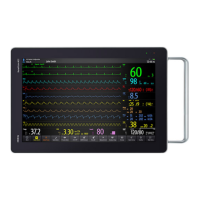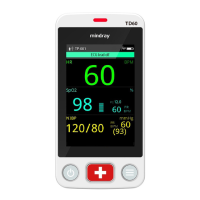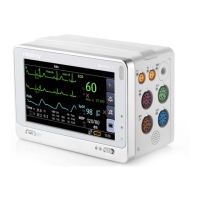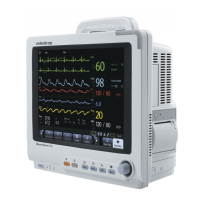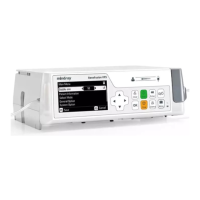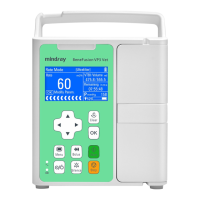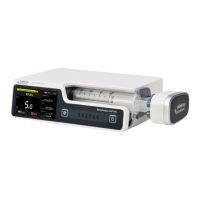3 - 12 BeneVision N1 Patient Monitor Operator’s Manual
• When a parameter is manually switched off, you cannot monitor this parameter even if the related
accessories of this parameter are connected.
3.11.2 Displaying Parameter Numerics and Waveforms
You can configure the parameter numerics, waveforms, and their sequence displayed on the normal screen. To
do so, follow this procedure:
1. Access Tile Layout in either of the following ways:
◆ Select the Screen Setup quick key → select the Tile Layout tab.
◆ Select the Main Menu quick key → from the Display column select Tile Layout.
2. Select a parameter numeric area or waveform area, and then from the popup list select an element you
want to display in this area. The parameters and waveforms you did not select will not displayed.
• ECG parameters and waveform are always displayed on the first line of the parameter numeric area
and waveform area.
3.11.3 Displaying the Parameter List
You can display trends of HR, SpO
2
, RR, and NIBP/IBP in the parameter numerics area. To do so, follow this
procedure:
1. Access Tile Layout in either of the following ways:
◆ Select the Screen Setup quick key → select the Tile Layout tab.
◆ Select the Main Menu quick key → from the Display column select Tile Layout.
2. Select the parameter numerics area where you want to display the parameter list, and then from the popup
list select Parameter List.
3.11.4 Accessing Parameter Setup Dialogs
Each parameter has a setup dialog in which you can adjust the alarm and parameter settings. You can enter a
parameter setup dialog by using any of the following methods:
■ Select the parameter numeric area or waveform area.
■ Press the setup hard key on the module front of the CO
2
module.
■ Select the Parameter Setup quick key, and then select the desired parameter.
■ Select the Main Menu quick key → from the Parameters column select Setup → select the desired
parameter
.
• In this manual, we always use the first method to enter the setup dialog. But you can use any method
you prefer.
3.11.5 Choosing a Screen
The monitor enters the normal screen after it is powered on. The normal screen is most frequently used for
patient monitoring. You can also select other screens. To do so, follow this procedure:
1. Access Choose screen in either of the following ways:
◆ Select the Screen Setup quick key.
◆ Select the Main Menu quick key → from the Display column select Choose screen.
2. Select the desired screen.

